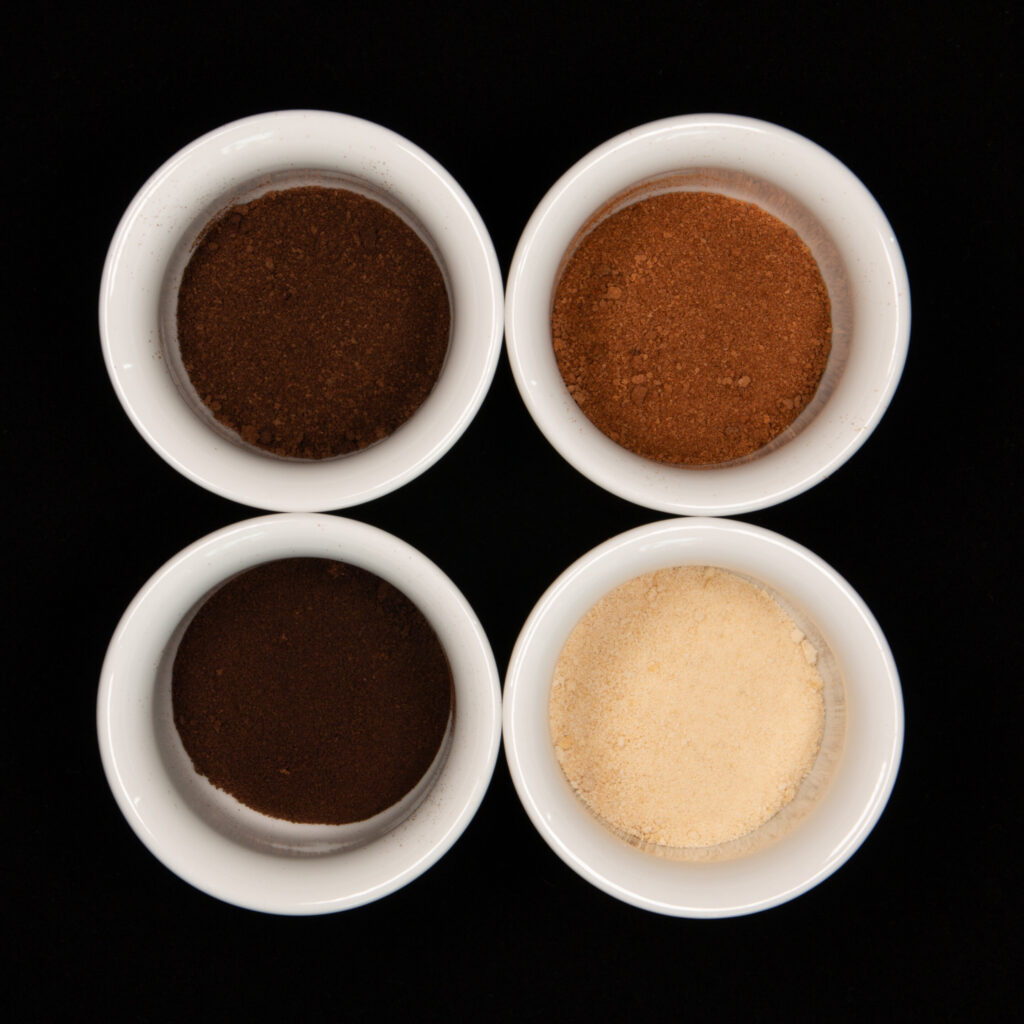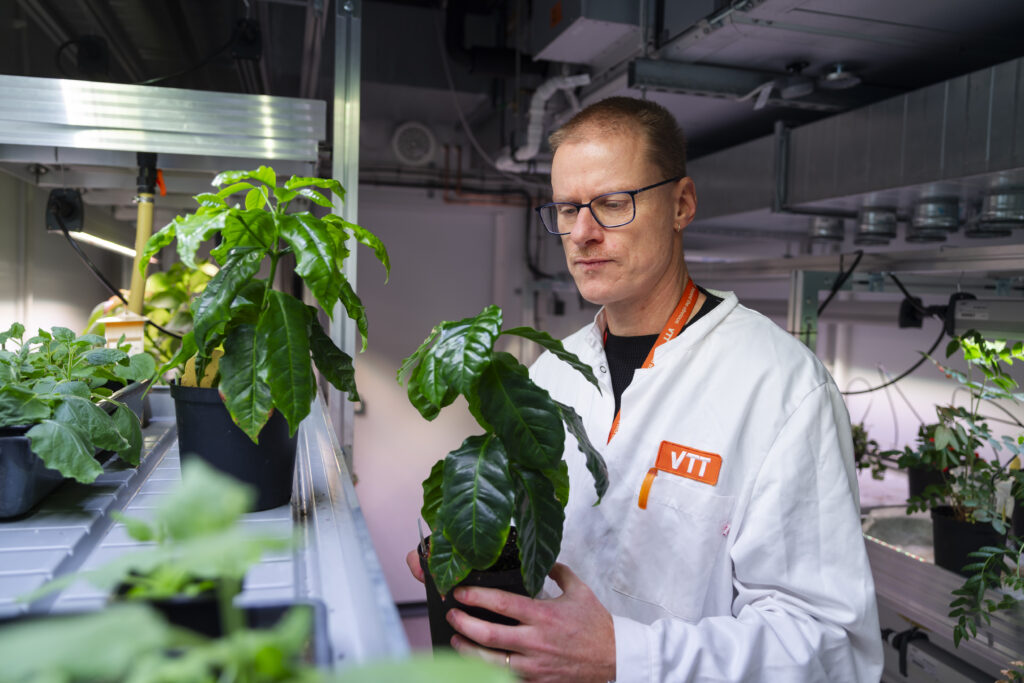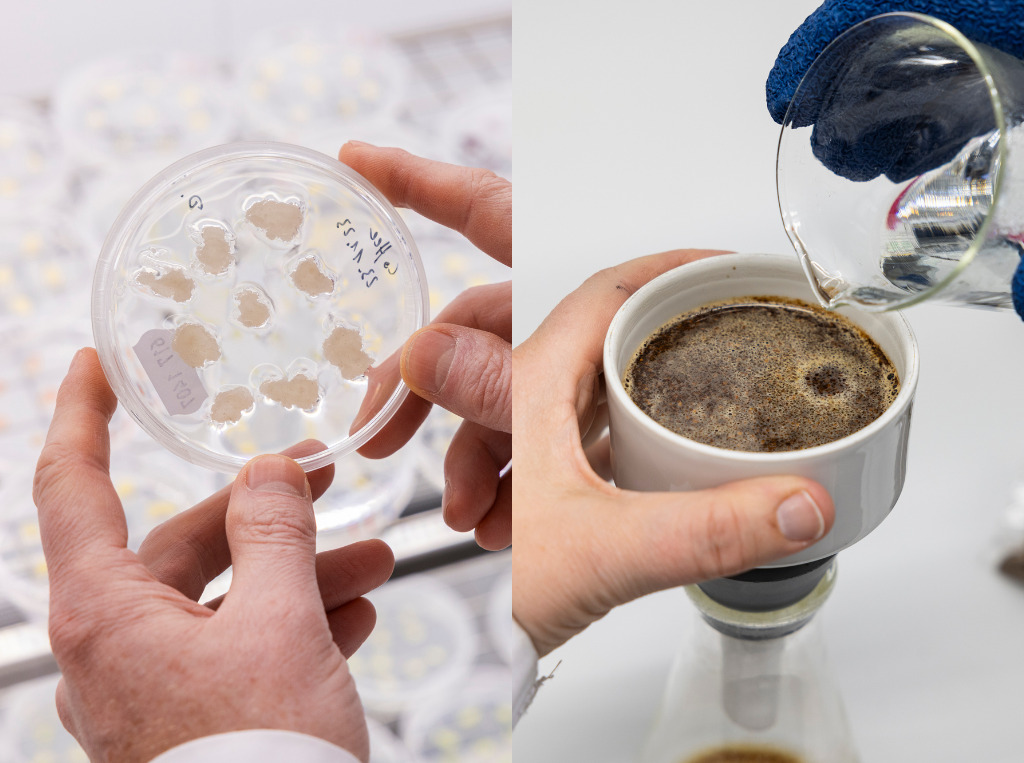How to Make Lab-Grown Coffee: Scientists Publish Recipe to Create New Coffee Ecosystem
5 Mins Read
Finnish researchers have published details of the process behind its lab-grown coffee, with the aim of developing an ecosystem that can speed up production and commercialisation of the novel ingredient.
What if you could grow your own coffee in a lab? Two years ago, that’s exactly what scientists at the VTT Research Centre of Finland did.
Now, they have released the recipe for their lab-grown coffee as a proof of concept. In a scientific paper published in the Journal of Agriculture and Food Chemistry, they describe the exact process used to produce this coffee, in the hope of creating a dedicated ecosystem to accelerate the production and commercialisation of cell-cultured coffee.
“Our wish is that the publication of this scientific article, which clearly demonstrates proof of concept for lab-grown coffee, nudges forward the creation of an ecosystem or a collective that has the resources, know-how, and drive to pioneer an entirely new type of coffee,” said Heiko Rischer, principal scientist and head of plant biotechnology at VTT. “It is a huge challenge but one VTT is prepared to take on with the right partners and experts.
How VTT makes lab-grown coffee

In 2021, Richter and his team unveiled the first prototype of their lab-grown coffee, whose flavour was described as a cross between coffee and black tea. The researchers began by initiating coffee cell cultures, establishing cell lines, and transferring them to bioreactors to begin producing biomass. Post-analysis, they developed a roasting process, before the new coffee was evaluated by VTT’s sensory panel.
Now, the scientists have shone a brighter light on the process. They obtained cells from young but fully developed Coffea arabica plants, cultivating them in a wave bioreactor, and freeze-drying them for storage after harvest. This powder was then roasted in a fan-assisted oven in three different conditions and then transferred to foil bags.
To analyse the lab-grown coffee, the team compared the samples with commercially available coffees and alternatives, with light and dark roasts used for colour and sensory analyses, and instant chicory coffee used for sensory assessments. Green coffee beans were also used to demonstrate that roasting causes similar changes to the pre-ground coffee as it does to the lab-grown coffee.
This was followed by microbiological and toxicity analyses to ensure the safety of brewed samples, as well as a test to measure the caffeine content (which was almost 40 times lower than conventional arabica coffee beans). Then, brewed samples underwent colour measurement and sensory profiling by a panel of trained tasters.
VTT says lab-grown coffee can speed up the production of the drink significantly. Traditionally farmed coffee provides one to two harvests annually, but a new batch of cell-cultured coffee can be made in just a month, thanks to the “controlled process and infinitely renewable nature of coffee plant cells”, which removes the need to grow new coffee plants from seeds.
Novel coffee production methods are crucial

Finding alternative ways to grow coffee is paramount. Arabica – one of the two main species of coffee grown and consumed worldwide (along with robusta) and the plant VTT took samples from – is facing the threat of extinction by 2080. In fact, of the 124 known coffee species, 75 (60%) could go extinct. Meanwhile, land suitable for growing coffee is set to be halved by mid-century too. Across the world, coffee growers are suffering from the effects of weather-related climate change. Farmers in Vietnam are questioning the value of coffee as a cash crop, which will ultimately mean more expensive coffee for end consumers. Plus, arabica coffee beans are more sensitive to the effects of extreme weather so coffee drinkers may need to get used to the far more bitter but hardier robusta beans.
Coffee is also one of the largest producers of greenhouse gases in the food system, behind only dark chocolate and red meats like lamb, mutton and beef. And in terms of emissions per 1,000 kcal, coffee tops the list. According to Our World in Data, coffee beans have among the highest carbon opportunity costs – “the amount of carbon lost from native vegetation and soils in order to produce each food” – only topped by meats like sheep, goat, beef and buffalo, and cocoa beans. And all this doesn’t even take into account coffee’s problematic supply chain ethics.
Europe is the largest consumer of coffee among all continents, importing over 3.6 million tonnes of green beans in 2021, with an average consumer drinking 5kg of coffee each year. But these climate and supply issues are already affecting the region. Coffee is a major driver of deforestation, and the EU has banned imports of any coffee that is linked to the felling of forests in producer regions.
This has birthed startups taking novel approaches to coffee production. Some, like VTT, are making use of cell-based processes. In France, biotech firm Amaterra, which has raised €1.5M in pre-seed funding, is using molecular biology to create climate-resilient crops from plant cell cultures, and developing perennial coffee varieties four to five times faster than traditional coffee, while Stem claims to be the world’s first startup developing mass-produced cell-cultured coffee.
Others are eschewing coffee altogether, instead coming up with beanless alternatives akin to plant-based analogues for meat. This includes Northern Wonder (Netherlands) Atomo, Minus Coffee, Voyage Foods (all US), Zero Coffee (Canada) and Prefer (Singapore).
But will consumers take to cell-based coffee? A 2019 poll by Dalhousie University revealed that 72% of Canadians wouldn’t drink lab-grown coffee, so there’s some way to go here. Firms like VTT can look to the growing number of foods being made in labs (not including cultivated meat, which has surpassed the lab stage). This includes chocolate, with Israel’s Celleste Bio and California Cultured leading the way, palm oil, animal fur, leather and fruits.
Lab-grown coffee is still years away from supermarket shelves. In 2021, Rischer predicted that it could obtain regulatory approval in Europe and the US in four years’ time. If that does happen by 2025, it would be a major breakthrough for a crop that’s on the brink. “It’s one thing to grow coffee cells in a bioreactor. Making it a commercially viable product is a whole other matter,” explains Richter.
“The raw material derived from different cultivars and species, and the soil, the elevation, climate, and even the year when the particular coffee beans were grown plus the processes of roasting, fermentation, brewing, are all factors that impact the end product. While lab-grown coffee is much more controlled, different approaches to, for example, roasting significantly impact the aroma profile of the coffee which is a key consideration for the consumer.”



